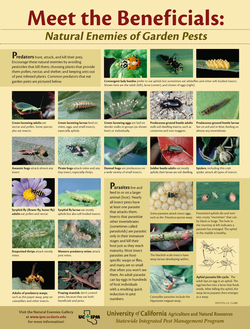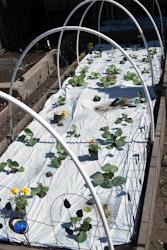Plant Pests and Diseases

Find information about safely and effectively controlling problems in your garden here!
See below for our Top 21 "offenders"
Meet the Beneficials: Your Friends in the Garden
Look below for other problems by type of plant:
Flowers

|
Trees and Shrubs

|
Vegetables

|
Fruit trees

|
UC IPM Site – more informationIPM, or Integrated Pest Management, helps you to control garden pests (including insects, diseases, and vertebrates) by effectively reducing problems using the least toxic methods that sufficiently control the pest. This scientific and environmentally sensitive way of looking at pest management walks you through several techniques if necessary to safely minimize or eliminate the pest. |
UC Pest Notes
Have a problem with an insect, disease, or vertebrate pest? Check the list of UC Pest Notes for in-depth solutions to your specific problem. Pest Notes are peer-reviewed publications about specific pests or pest management topics directed at California's home and landscape audiences; they are based on UC's IPM recommendations. |
Top 21 pests and diseases
These are some of the garden pests we most often encounter in Bay Area gardens:
Meet the Beneficials: Your Friends in the Garden

Beneficial insects are the natural enemies of garden pests, they help keep our garden’s ecosystem in balance. Green lacewings are generalist predators, with the adults eating nectar and pollen and the larvae feeding on mites, eggs, and small insects such as aphids and thrips. Lady beetles (in larva and adult state) prefer aphids but also eat whiteflies and other soft-bodied insects. Invite them into your garden by choosing plants that provide them shelter, pollen, and nectar and avoiding pesticides that kill them.
See a variety of natural enemies in this poster from UC IPM (PDF).
Reduce Pests and Diseases By Changing Your Cultural Practices

Learn more about how to avoid or prevent garden pests with cultural practices (i.e., barriers, planting schedules, and selecting disease-resistant varieties) see Reduce Pests and Diseases By Changing Your Cultural Practices

